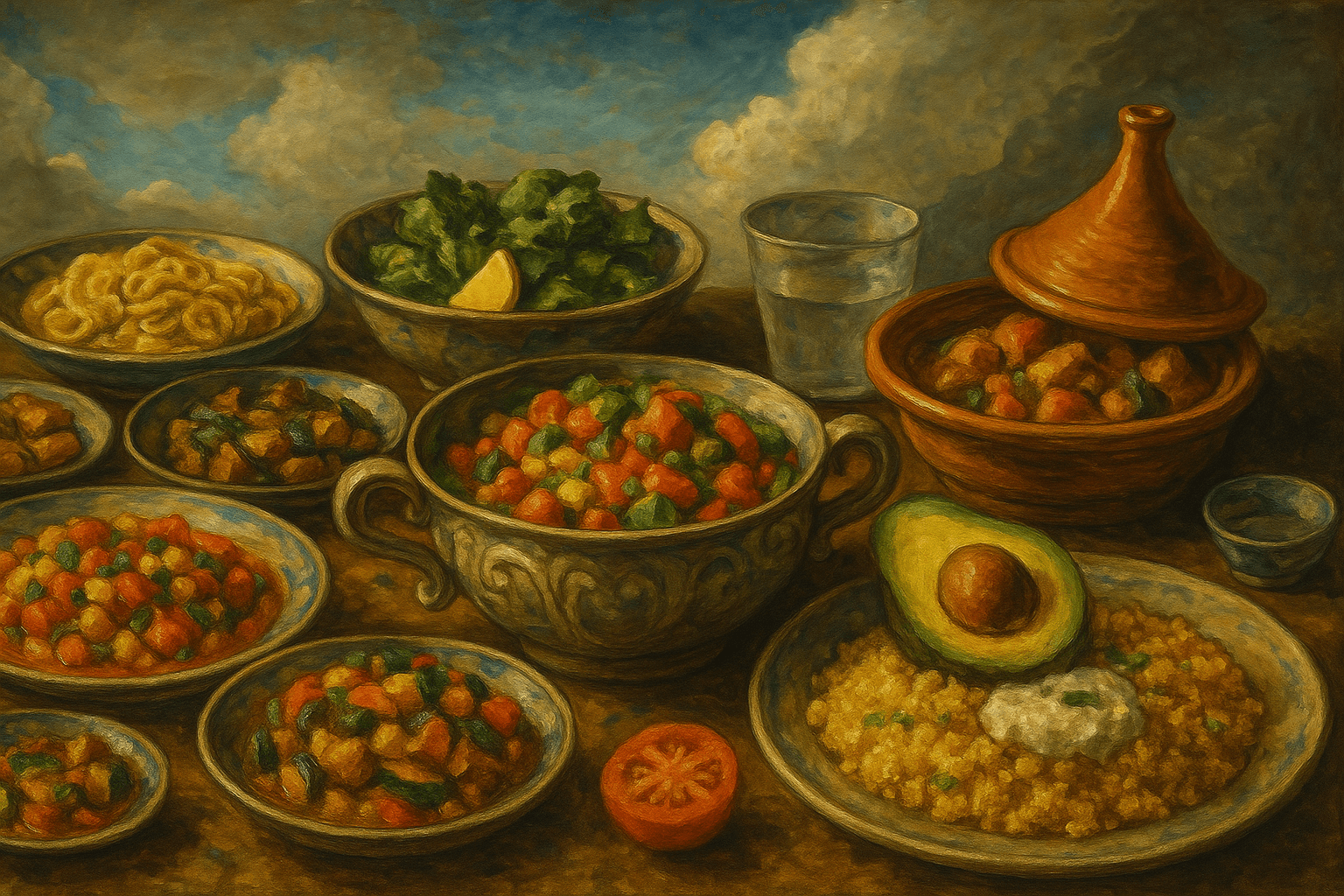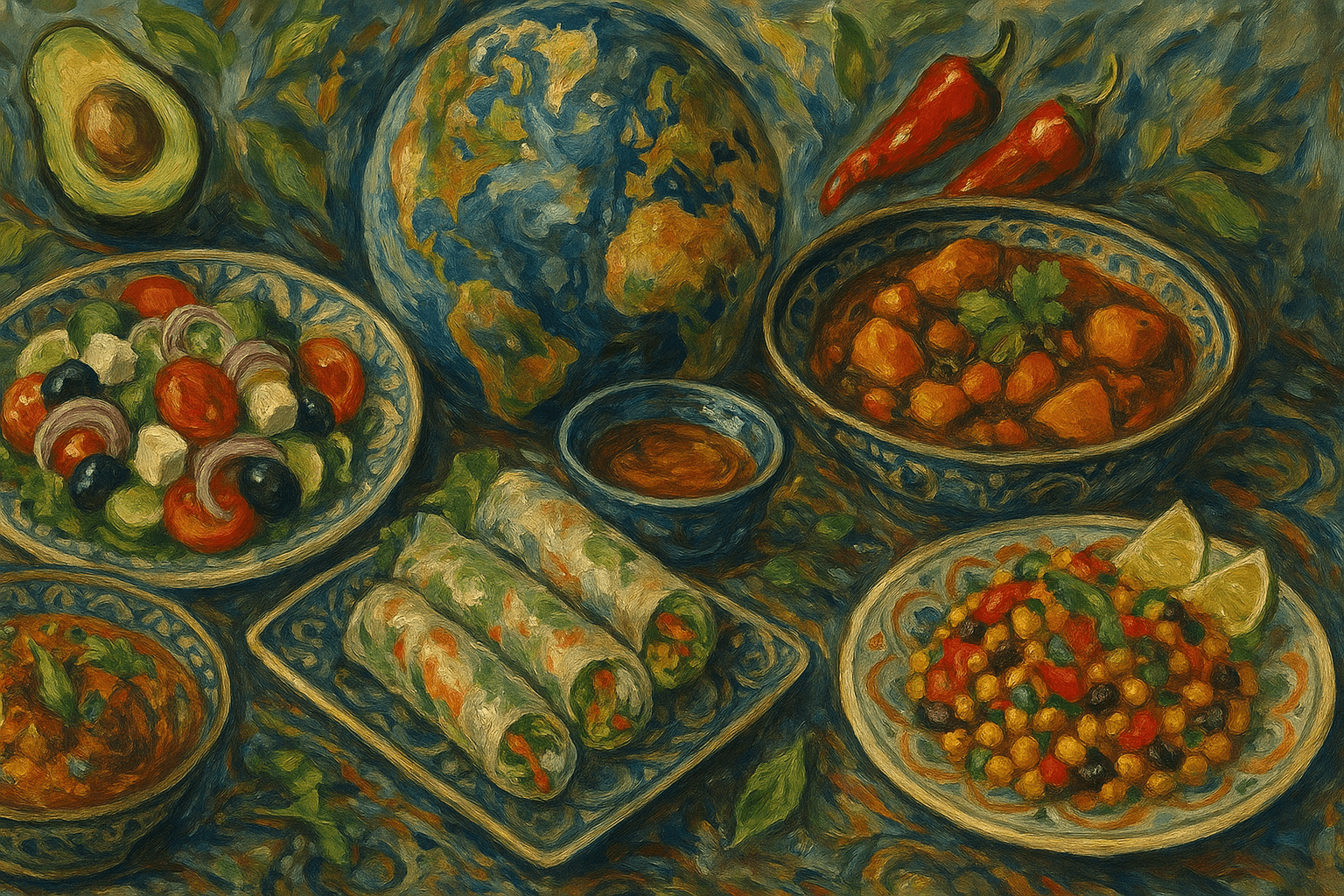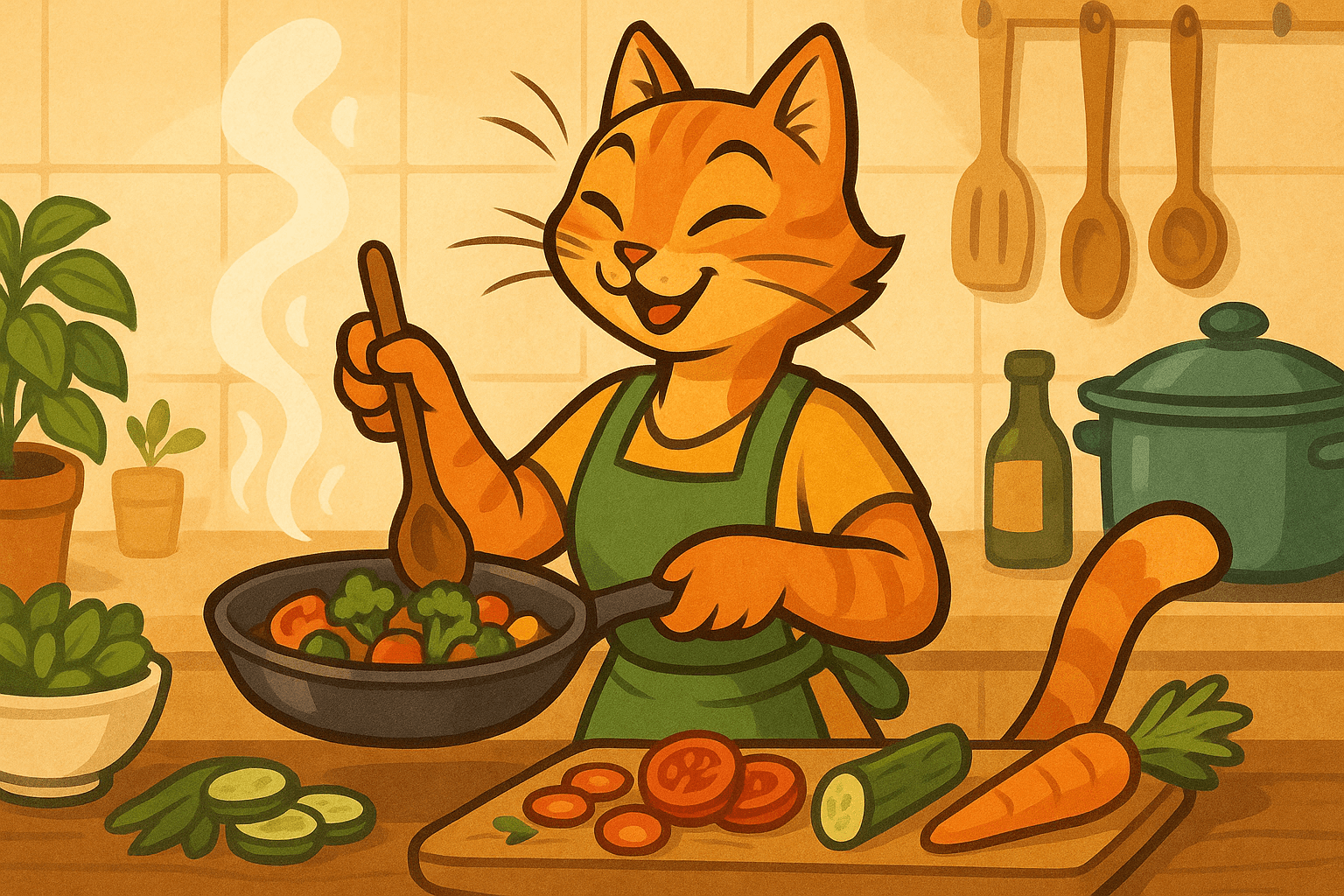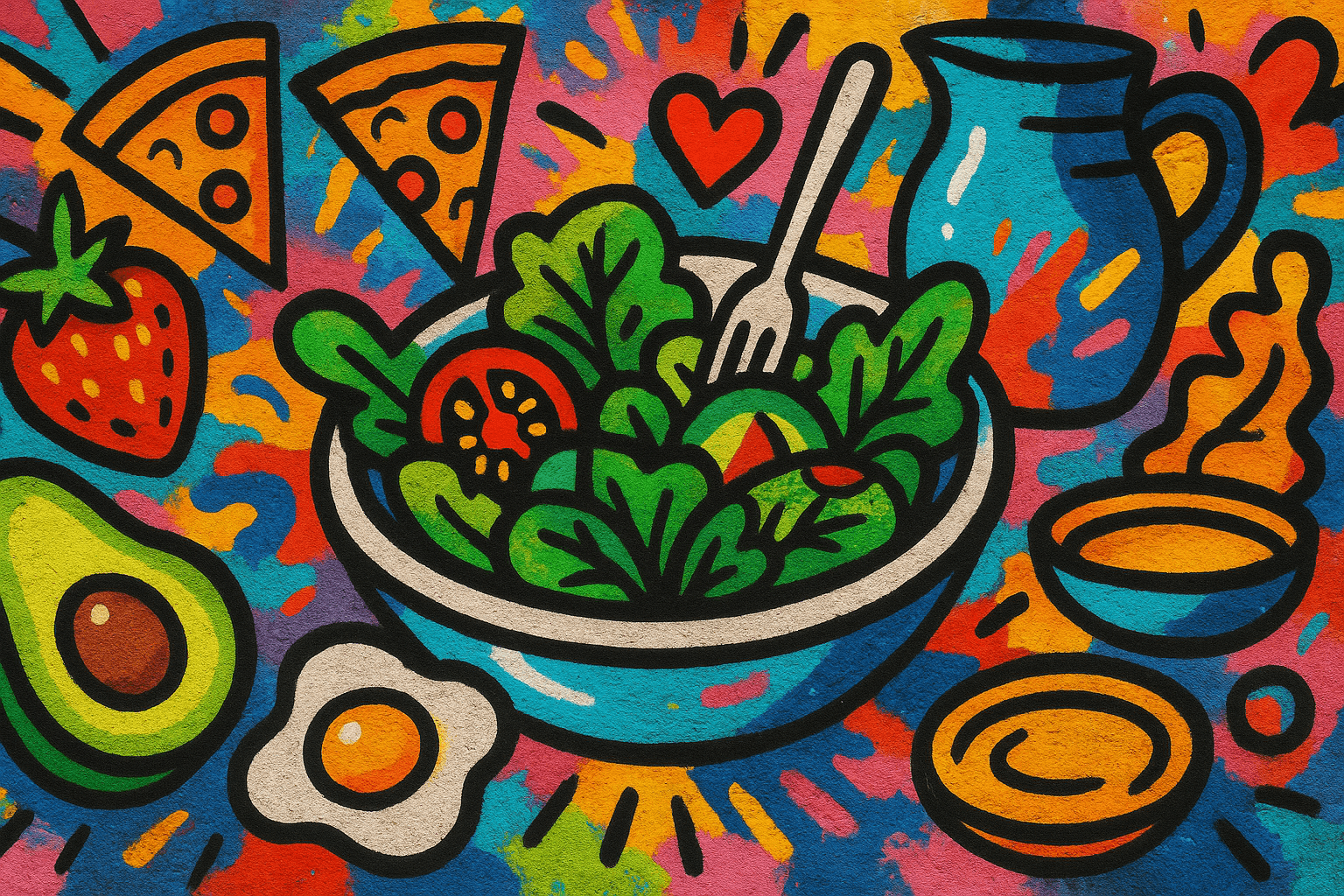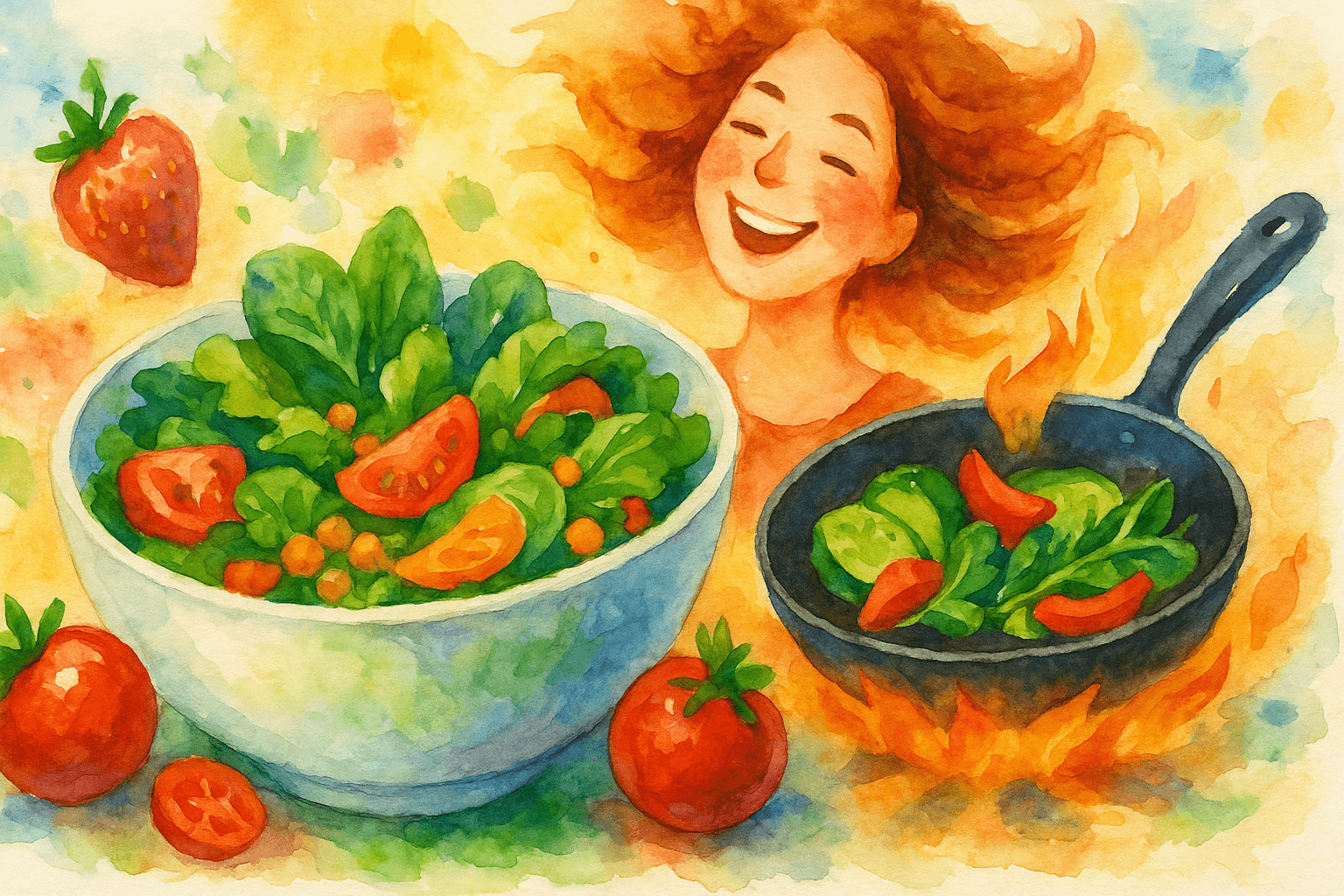Veggie Power-Up: Delicious, Nourishing Recipes to Boost Plant Variety Without Getting Bored
Published on May 29, 2025

Eating more plants isn’t synonymous with eating more salad. It’s about painting your plate with color, texture, and flavor—enough to not only fuel you, but to make you happy at the table. One of the fastest ways to boost fiber, feed your microbiome, and flood your cells with phytonutrients is simply to eat more vegetables.
But let’s be real—if “more veggies” means a sad bowl of steamed broccoli, nobody’s sticking with that. This guide is about falling in love with plants. We’ll cover flavor, texture, cooking techniques, and easy wins to make veggies the highlight of every meal.
Why Plant Diversity Matters Your gut microbiome thrives on variety. Different fibers feed different strains of bacteria, and the more types of plants you eat, the more robust your gut ecosystem becomes. That translates to better digestion, stronger immunity, clearer skin, and a brighter mood.
The American Gut Project found that people who eat 30+ plant types per week have significantly more diverse gut microbiomes than those who eat fewer than 10. And it’s not just veggies—fruits, grains, legumes, herbs, spices, nuts, seeds, and even chocolate count.
Quick Tips to Add Diversity Without Overwhelm
Vary your greens: mix spinach, kale, arugula, romaine, mustard greens
Use frozen staples: peas, corn, broccoli, edamame, stir-fry blends
Count herbs and spices: basil, dill, cilantro, mint, parsley
Buy 1 new-to-you veg each week: fennel, jicama, kohlrabi
Recipe: Creamy Green Soup with Crispy Chickpeas Comfort food meets chlorophyll. This creamy green soup is batch-friendly, nutrient-dense, and fiber-rich.
Ingredients (serves 4):
Soup:
1 tbsp olive oil
1 leek (white/light green only), sliced
2 garlic cloves, chopped
1 zucchini, chopped
2 cups broccoli florets
2 handfuls spinach or kale
1 small potato (optional, for creaminess)
4 cups vegetable broth
Juice of ½ lemon
Salt and pepper to taste
Crispy Chickpeas:
1 can (15 oz) chickpeas, rinsed + drained
1 tbsp olive oil
½ tsp paprika
¼ tsp garlic powder
Salt to taste
Instructions:
Preheat oven to 200°C / 400°F.
Toss chickpeas with oil and spices. Roast 25–30 min until crispy.
Sauté leeks and garlic 3–4 min in oil.
Add zucchini, broccoli, and potato. Cook 5 min.
Add broth, cover and simmer 15–20 min.
Add greens and lemon juice, blend smooth.
Top with crispy chickpeas and serve warm.
Make it a meal: Add a soft-boiled egg, hemp hearts, or a slice of seed bread for protein.
Recipe: Roasted Veggie Pitas with Herby Tahini Sauce These smoky, creamy pitas make plant-based meals irresistible.
Ingredients (serves 4):
Roasted Veggies:
1 red bell pepper, sliced
1 zucchini, cut into half-moons
1 small eggplant, chopped
1 red onion, sliced
2 tbsp olive oil
1 tsp smoked paprika
Salt and pepper
Herby Tahini Sauce:
3 tbsp tahini
Juice of 1 lemon
1 garlic clove
1 bunch parsley and cilantro
2–4 tbsp water to thin
Salt to taste
To Serve:
4 whole-grain pitas
Optional: lettuce, pickled onions, crumbled feta
Instructions:
Preheat oven to 200°C / 400°F.
Toss veggies with oil, paprika, salt, pepper. Roast 25 min, flip once.
Blend sauce ingredients until smooth. Adjust with water/salt.
Warm pitas, spread sauce, fill with veggies and toppings.
Smart swap: No tahini? Use hummus or yogurt. Sub pitas with wraps or tortillas.
Make Veggies the Star of the Week Most people think of vegetables as a side. Flip the script.
Build meals around the veg:
Sweet potatoes? Tray bake with beans and salsa
Cauliflower? Roast and top with tahini + pomegranate
Use sauces to transform:
Try chimichurri, romesco, or miso dressing to elevate any base
Mix raw and cooked:
Pair raw shredded carrots with roasted fennel
Add texture with crunch and softness in every bite
Quick Combos to Try:
Roasted Brussels sprouts + balsamic + walnuts
Grilled eggplant slices + yogurt + mint
Sautéed kale + garlic + chili flakes + lemon
Raw beet ribbons + orange + pistachios
Each plate = a new opportunity for creativity and nourishment.
How to Grocery Shop for Variety Diversity starts with your grocery cart.
In the produce aisle:
Pick 1–2 items from each plant color group
Grab a leafy green you don’t usually buy
Choose 1 new fruit or vegetable per week
In the pantry:
Canned legumes (chickpeas, lentils, black beans)
Rotate whole grains: quinoa, bulgur, barley, buckwheat
Nuts and seeds: chia, sunflower, pumpkin, sesame
Global staples: coconut milk, curry paste, canned tomatoes, tamari
In the freezer:
Broccoli, spinach, stir-fry mixes
Berries and mango cubes for smoothies
Edamame and green peas for fast meals
Smart Swaps:
Hummus or nut spreads instead of mayo
Grate/shred veggies into sauces or soups
Try cauliflower rice or veggie noodles sometimes
Your grocery list = your future meals. Make it colorful, fun, and full of possibility.
Eat the Rainbow—Your Way
Plant diversity doesn’t mean complexity. It means:
More color
More flavor
More fun
Eating more plants isn’t about becoming a chef overnight. It’s about keeping flavorful staples on hand, leaning on sauces, and playing with textures and tastes.
Start small:
If you eat 10 plants a week, aim for 15
Try one new item per week
Double recipes, eat leftovers, freeze extras
Plants aren’t just filler. They’re fuel, medicine, and pleasure. With a little creativity, variety becomes second nature—and boredom disappears.



